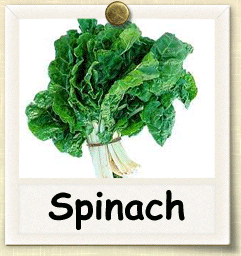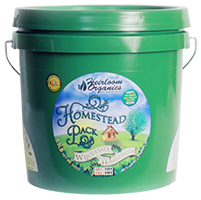|
Home > Guides > Vegetables > Spinach |
|
How to Grow Spinach | Guide to Growing Spinach |
|
|
|
|
| |
 |
|
Overview |
|
|
|
|
|
| |
|
| |
This easy-to-grow, nutritious, cool-season crop is among the first greens ready to harvest. But plant it early because it’s quick to turn bitter and go to seed (bolt) as the weather warms and the days lengthen. Dark green color and handsome texture of savoyed varieties are great for edible landscaping. |
|
| |
|
|
| |
Growing Guide
GROWING NOTES
Well-drained, fertile soil, high in organic matter. Plentiful, consistent moisture. Tolerates slightly alkaline soils but is sensitive to acid soils. pH should be at least 6.0, but preferably in the 6.5 to 7.5 range.
Must be planted early and grown when temperatures are cool. Needs consistent moisture. Will go to see (bolt) if too dry, or when days lengthen and temperatures warm.
Varieties with savoyed (curly) leaves add interest for edible landscaping.
MAINTAINING
As soon as you can work the soil in spring, sow seed ½ inch deep, 1 inch apart in rows 12 to 18 inches apart (or broadcast seed across a wider area). Thin to 2- to 6-inch spacings. Closer spacings can stress plants and cause them to go to seed (bolt) sooner.
Early planting is critical as dry soil, heat and lengthening days also encourage bolting. Later plantings benefit from some light shade from other crops. Follow early plantings with warm-season crops such as tomatoes or beans.
Make succession plantings every week or two until average last frost date. Use bolt-resistant varieties for later plantings. Sow again in mid- to late summer for fall harvest. Seeds do not germinate well in warm soil, so increase seeding rate to compensate. Or pre-germinate seeds by placing them between sheets of moist paper towel in a plastic bag and refrigerating until they sprout.
Spinach seedlings are difficult to transplant. For spring crops, start inside only if your garden stays too wet in spring to allow direct seeding. Start transplants inside about 3 to 6 weeks before last frost.
Spinach is shallow-rooted and requires consistent moisture to prevent bolting. Water to keep soil moist. Mulch after plants are well established to maintain moisture and suppress weeks. Use floating row covers to prevent insect damage.
Do not overfertilize with nitrogen. Only apply supplemental fertilizer if leaves are pale green. Add lime to make sure pH is at least 6.0. You should suspect that your soil is too acid if germination is poor and leaf tips and margins are yellow or brown.
Plant in fall and mulch heavily for early spring crop.
|
|
| |
|
| |
Heirloom seeds are the gardeners choice for seed-saving from year-to-year. Learning to save seeds is easy and fun with these books. Before you harvest, consider which varieties you might want to save seeds from so that your harvesting practice includes plants chosen for seed saving. Be sure to check out our newest seed packs, available now from Heirloom Organics. The Super Food Garden is the most nutrient dense garden you can build and everything you need is right here in one pack. The Genesis Garden s a very popular Bible Garden collection. The Three Sisters Garden was the first example of companion planting in Native American culture. See all of our brand-new seed pack offerings in our store.
|
|
| |
|
|
| |
Harvesting Guide
HARVESTING
Spinach is ready for use as soon as it is edible size and it must be harvested before there is extensive yellowing, breakage and other leaf deterioration or the development of seed-stalks. Spinach for market is usually cut below the crown with a knife, taking care to keep the plants clean and to prevent undue breakage or bruising of the leaves. Spinach should be sorted to remove all yellow or damaged leaves before packing into baskets. If spinach is slightly wilted when packed, it will be less subject to breakage. Usually, spinach is washed, repacked, and iced at a central packing shed if it is to be shipped.
SAVING SEEDS
Wind pollinated. Spinach varieties must be isolated by 1/4 mile to prevent cross pollination by wind. Physical barriers such as tree lines, buildings or woods may make it possible to use a shorter distance. Allow plants to bolt and set seed. Some staking may be necessary as plants may reach 3' in height. When seeds are dry, harvest the entire plant and thresh on a tarp. A 1/2 " screen on top of a 1/4" and 1/8" is helpful for cleaning. Spinach seed remains viable for 3-5 years under cool and dry storage conditions. |
|
| |
|
|
|
| |
|
|
|
|
|
| You can find this variety in the following Seed Packs: |
|
  
   |
|
| Click the packs below to see some of our other wonderful products |
|
|
|
|
|
|
|